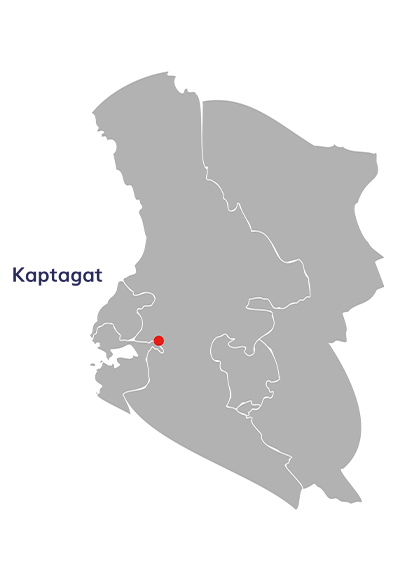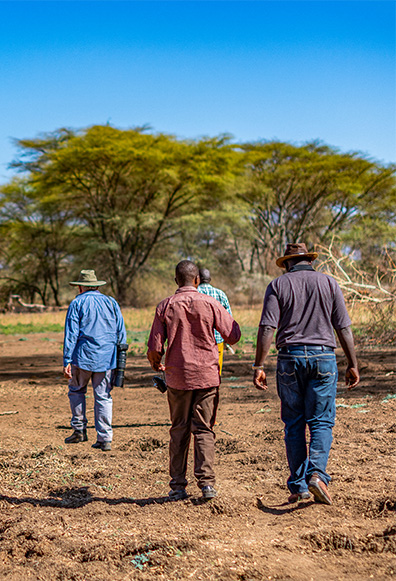Countries:
Kenya
Status:
Completed
Sector:
Nature
Promoting an integrated approach towards landscape management to reduce carbon emissions, consider biodiversity and address poverty challenges in the Kaptagat region.
Kaptagat Forest boasts significant biodiversity and provides important ecosystem services to surrounding regions, both as a water reserve and a carbon sink.
However, people in Kaptagat still face numerous sustainable development challenges, including poor access to water, limited income generating activities, and farming losses due to landscape degradation.
In light of this, the Greening Kaptagat project used a multi-stakeholder approach to address land degradation caused by unsustainable land uses, and to support poverty alleviation through improved sustainable livelihoods. The project also aimed to reduce carbon emissions through improved green energy practices in the landscape, contributing towards Kenya’s revised Nationally Determined Contributions (NDC).
Overall, the project has achieved a positive impact through the restoration of over 700 hectares of forest, as well as future planned restoration through the development of a restoration plan. The project also strengthened capacity of local stakeholders in climate-smart agricultural techniques, and improved access to green energy/biogas units, clean water, and post-harvest storage to reduce yield losses.
WWF-UK delivered this project in partnership with WWF-Kenya and the Eliud Kipchoge Foundation.
“We have seen a lot of benefits from this initiative. When we sell seedlings, we get income to support our families at home. We also formed a table banking group where locals can borrow small soft loans.”
Elizabeth Kigen
Chairlady of Tumaini Self-Help Group
“My home is two kilometres from the river, so you can imagine the hustle my family had to go through to fetch water. The initiative is a huge relief to the locals, many even now have vegetable gardens in their backyards.”
Joel Keitany
Chairperson of the Kibogy Water Project CBO

of degraded land restored in partnership with Kenya Forest Service, Eliud Kipchoge Foundation and Trillion Trees
gained improved access to clean water for drinking, household use and agriculture, also reducing time spent on accessing water daily
received biogas units to support a transition to low-carbon energy
distributed to persons with disabilities to cut post-harvest losses
Through a range of capacity building and stakeholder engagement activities, the project successfully improved local livelihoods and increased forest restoration in the Kaptagat region.
Key outputs of the project included:
Providing piped water to the local community reduced the time and effort required to collect water, which is typically undertaken by women and youth
One self-help group supported included 40 women, who have now set up a tree nursery acting as a vital source of income
Training sessions with local farmers and new technologies donated to widows and people with disabilities have reduced post-harvest losses and made income streams more resilient
Biogas units reduced the need for local people to fetch firewood, which was usually performed by women and youth, enabling them to reinvest their time into projects
The project supported low-income farmers by enhancing access to resources for developing scalable and sustainable business models for local deforestation commodities. Local people from disadvantaged groups were trained in climate smart agriculture and provided with tools to support agricultural yields and use cleaner energy sources.
To ensure effective delivery and buy-in, the team worked with the local Community Forest Associations (CFAs) in Kaptagat – these bring together a wide network of stakeholders including: farmers, local producers, agricultural extension workers – a number of which are women, persons with disabilities, and youth – as well as other government agency stakeholders.
Specific gender equality and social inclusion (GESI) activities delivered by the project included:

The project has laid the foundation for local stakeholders and partners to collaborate and continue implementing the restoration plan for Kaptagat, whilst also supporting the scaling up of more sustainable and improved livelihood interventions for local people.
The project outlined key lessons for future interventions:
The project’s results are already being built upon as UNDP has begun to support restoration efforts in the landscape through the Forestry and Land Restoration Action for Kenya’s NDC (FLaRAK) project.”
UK PACT (Partnering for Accelerated Climate Transitions) is a unique capacity-building programme. Jointly governed and funded by the UK Government’s Foreign, Commonwealth and Development Office (FCDO) and the Department for Energy Security and Net Zero (DESNZ) through the UK's International Climate Finance, it works in partnership with countries with high emissions reduction potential to support them to implement and increase their ambitions for tackling climate change.
© Copyright 2025 UK PACT Privacy Notice Cookie Policy